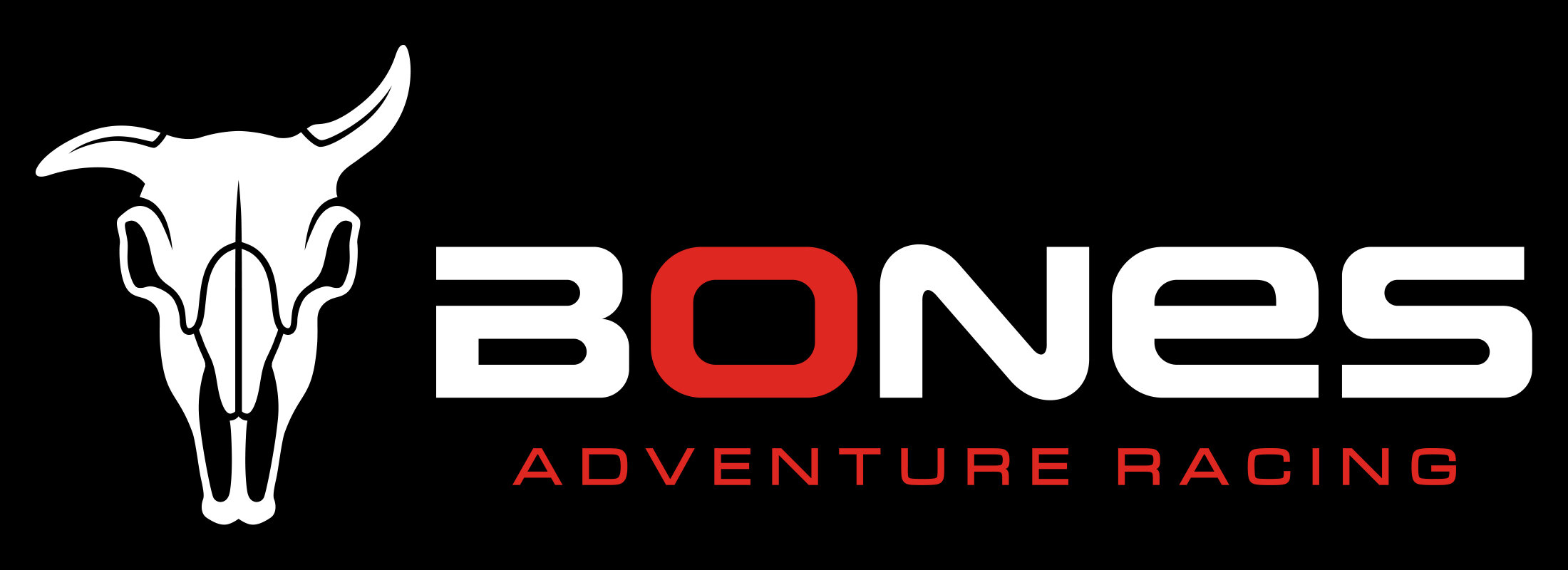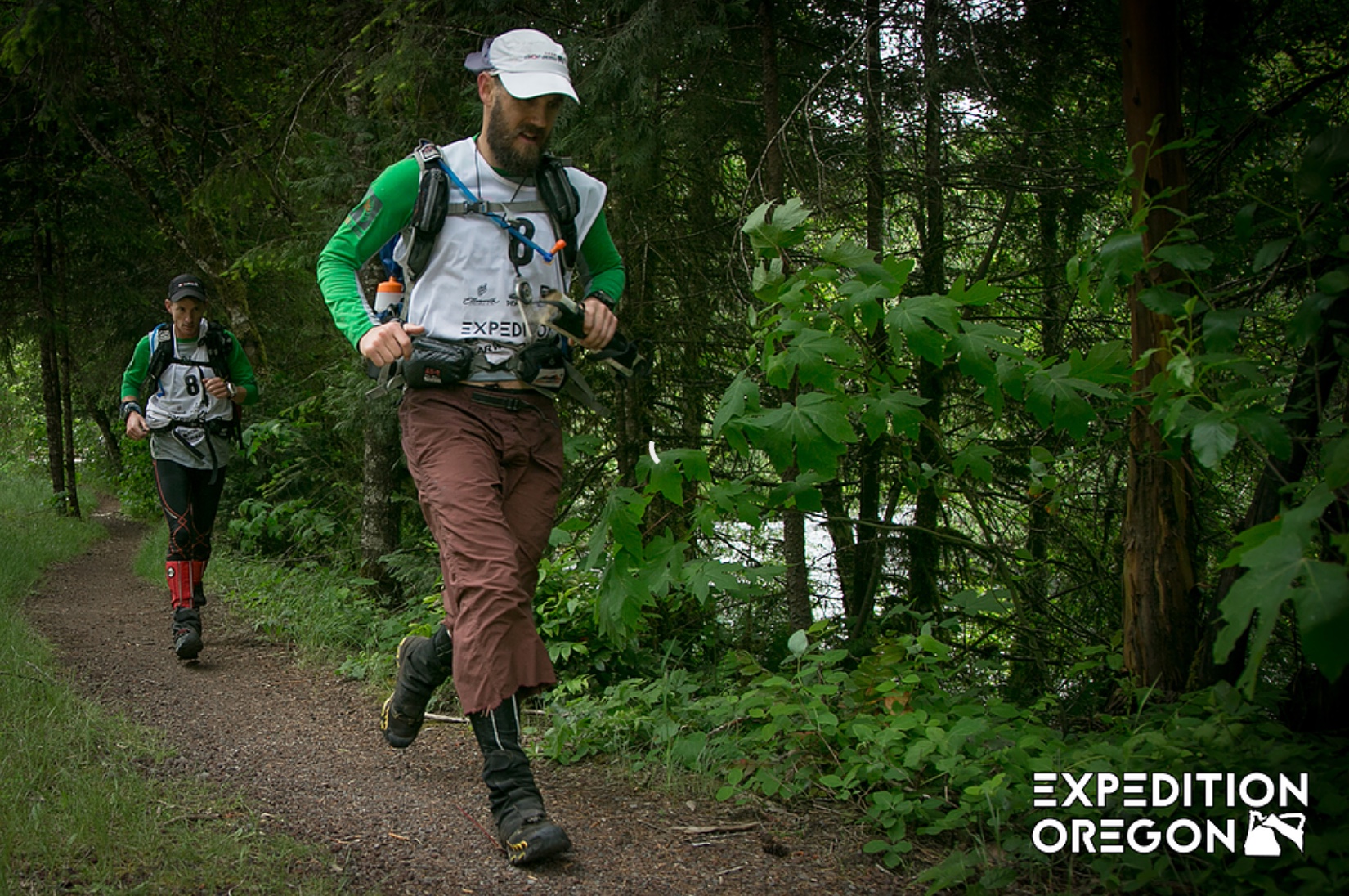2018 | ARWS Expedition Oregon
65 Hours of non-stop racing.
20 minutes of sleep.
On-the-clock expedition adventure racing always requires striking a balance between efficiently moving forward with maintaining enough cognitive capacity to make smart decisions and navigate accurately.
As darkness fell, 60 hours after the race began on Thursday morning, we approached a class III rapid on the Deschutes River in our tandem Alpaca packrafts. By then, we were definitely on the wrong end of cognitive capacity as we decided to run the rapid, instead of portaging, despite the inability to see and thus read it…. Chaos ensued.
____________________________________________
8:00 AM Thursday morning- The race began beside a nondescript road in the middle of nowhere specific, deep in the Willamette National Forest. 21 teams launched up a heavily wooded South-facing slope, climbing 1800+ feet in less than a mile, often on hands and knees and dodging debris dislodged by the teams above.
Bones was the first to reach the top but was quickly caught by Merrell, Bend Racing Canada, and Quest AR as the frigid mountain mist enveloped the area making navigation a challenge. Over the course of the next five hours, we traded positions several times on the way to the McKenzie River and TA1. Frigid conditions and light snow conspired to freeze our parts and break our resolve.
12:42 PM Thursday – We arrived at the river about 20 minutes behind Merrell, blew up our packrafts, and jumped into the quick-moving McKenzie River behind Merrell and a couple of minutes ahead of Bend Racing and Quest AR. We opted to use two Alpaca open-cockpit boats. The McKenzie ended up being a fast-moving Class II river, requiring solid water skills to stay fast and upright. Regardless of our attempts to avoid the larger holes, our boats would quickly fill with water and we would need to pull over and dump the boats so they could act more like boats and less like submarines.
This kayaking section, which included a couple of bushwhacking portages, took five hours to complete. Quest AR, which had opted for sleek, skirted Alpacas grabbed the lead- definitely the right boat choice for the McKenzie. All four lead teams flipped at least one boat in a specifically nasty class III, chilling those who swam it to the bone. The bikes at TA2 were a welcome sight heading into the night.
6:00 PM Thursday- We began with a 3,600-foot climb to the top of a local peak, the next 30 miles and 10,000 feet of elevation gain through the night took us 10+ hours and often involved a bike-whack through the dense Oregon bush. Mid-way through the bike leg, we hit a climbing section where one teammate would need to perform a Class II rock scramble and one a 5.9 technical climb. Liza and Charles would crush the challenge, scampering up the respective rock faces without issue.
4:20 AM Friday- We departed from Tombstone Sno Park on foot and climbed to Browder Ridge where the morning panoramic views almost compensated for the jungle of Devils Club we fought through on our way up. A slight navigation error set us back about 20 minutes and any thoughts of speeding up to make up the lost time were dashed by the off-trail fight through slide alder and manzanita bush and the slog along a forgotten and heavily overgrown road of yesteryear. The 16 miles took us a snail’s pace 8 hours, putting us into TA4 just after noon on Friday.
12:47 PM Friday- We were back on the bikes for another 3,000 feet of elevation gain along the historic Old Santiam Wagon Road where we arrived at the orienteering area in the late afternoon.
4:43 PM Friday- We arrived at the orienteering loop at the same time as Bend Racing. Eight checkpoints disbursed among lakes, dense brush, overgrown roads and steep terrain. We made quick work of the first six and were headed back to our bikes as darkness fell on the way to our seventh point. Sleep deprivation/distraction/darkness – whatever the cause, we ended up well north of the large lake where CP2 (our seventh point) was located. As we tracked back to our last known spot, we were able to find the lake, approaching from the south. The approach to the CP from the south, however, was hindered by a swamp that forced us to go back around from the north. All told, we lost 45 minutes and a bit of motivation.
We decided to grab a quick 30-minute sleep to regroup before the massive upcoming bike leg. We jumped into the shed to find Team Dart sleeping before they headed out for their orienteering attempt. Dart’s Aaron Rinn’s snoring shook the shed as we tried to lie down. Then 15 minutes into our “sleep” Dart decided they had better get going and took the next 15 minutes to rouse and make as much noise as possible getting their gear together. We left the cabin hardly refreshed.
Leaving just after midnight, we were back on our bikes and navigating a maze of old fire roads that crisscrossed and climbed, and climbed, and climbed. We ultimately arrived at the rappel site. Bikes attached to our backs, we dropped the 150 feet to the last leg of our biking section. The final few hours to the river was an amazing groomed downhill, crammed with bumps, berms, jumps and sweet flow. It energized us and ALMOST made all of the climbing worth it.
As we approached the transition area, it was growing dark and we discussed the lunacy of packrafting “Big Eddy” at night. The rapid, a Class III series of three holes looked fine when we scouted it before the race so long as we held river left. Anything down the middle was big water and likely a swim. Our decision was to portage around Big Eddy through the lava fields.
When we arrived, Bend Racing had just finished the run without flipping and Quest had portaged and been caught by Bend Racing. Quest and Bend Racing ultimately decided to travel together to the finish, a short five-mile bike ride.
Maybe it was the excitement of almost being finished, maybe it was the encouragement and promise of having sufficient safety personnel available, or maybe it was our sleep-deprived lizard brains anxious for one last shot of adventure, but our previous decision to portage around the rapid was scrapped and replaced with a desire to run it. Before running it though, we had to get there. A 40-minute run to the put-in and 10 minutes of blowing up the boats took us to 9:10 PM before we were on the water. Shadows and reflections guided us downriver to the top of Big Eddy. Daniel from Explore Oregon met us at the top of the rapid and confirmed that we wanted to run it. We did. Instructions were to follow his line. We tried, but in the darkness, it was hard to even see his boat beyond 20 feet and then it disappeared down the first hole.
Jason and Liza were the first to drop in and Charles and I followed. Unable to see any of the rapid, it was blind faith. And then carnage. Our boat exploded in the first hole, ejecting Charles and myself and our two packs which were connected together and to the boat. As a long-time raft guide, floating class III rapids are standard practice. But at night, things are different. My knee popped hard on a rock underwater and nearly stole my breath.
Knowing that the second hole was approaching, I managed to grab another mouthful of air before going down again. Another rock. Resurfacing, I could see Charles hanging on to the raft like in an old-time movie- nothing but whites, greys, and blacks. Then back down again as we hit a keeper hole. This time, when I came up, I could see nothing but yellow, as I ended up under the boat. Using my hands to walk backward, I was able to push the boat forward and grab some more air. I kicked hard to catch an eddy and got flushed out on the far bank. Crawling up on the lava field, I couldn’t see anyone.
Given my rough ride through the rapids, I was really scared for the rest of the team. Unable to see them, I headed down the lava field picking my way slowly, still shaken and with unsure balance on the sharp rock. After a while, I saw a light on a packraft and Daniel paddled over to ferry me to the other bank. Confirming everyone was safe was a huge relief. Safe, yes, but also shaken, stirred, and shattered. The swim in the dark had been rough for everyone. A stupid decision to run the rapid, really.
We did an inventory check- two packs missing, two paddles missing. We picked our way down to the boat takeout and got on our bikes for the short ride to the finish. Between the extreme sleep deprivation and recent trauma, what should have taken 30 minutes took us over three hours as we rode in circles in our compromised condition. At last, we crossed the finish to a warm burrito and a few hearty souls that were still crawling around at 1:00 AM.





